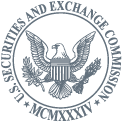In a security’s lifecycle, the delay between trading and settlement date permits vital processing steps necessary for the high number and value of transactions. Since the requirement of the first level of the Central Securities Depositaries Regime (CSDR) in 2014 – aiming to standardise settlement and to mitigate counterparty and market risk – the majority of European markets adopted a new and reduced two-business day window between trading and settlement i.e. T+2 settlement cycle.
The US followed suit shortly after in 2017, transitioning standardised settlement from T+3 to T+2 and in February 2022, the Securities and Exchange Commission (SEC) proposed to further reduce the settlement cycle to T+1.
Naturally, this raises the question if global alignment should be maintained and how this would be achieved operationally.
Reducing the settlement cycle will serve to reduce both the period investors are exposed to their counterparties and the associated counterparty, market and credit risk, most importantly during periods of high market volatility.
Inevitably, with a significant process change at hand, there will be challenges that would need to be overcome to facilitate a successful transition. Owing to the global composition of ETFs, these challenges may be even more defined in this space.
Cross-border requirements
Global ETFs containing a geographical variety of underlying securities have additional cross-border requirements which need to be accounted for while remaining cognisant of differing time zones and market holiday calendars. All can make settlement more susceptible to delays which will become increasingly under pressure in a T+1 cycle.
For example, due to the cross-listed nature of ETFs, liquidity providers regularly transfer inventory between various CSDs to settle trades across the various trading venues.
If these cross-border transfers of securities are not robust, then these will involve intricate operations and restrictive cut-offs.
Fittingly, the International Central Securities Depository (ICSD) supports a singular settlement architecture which supports the overall settlement and trading framework of those ETFs operating on it.
Furthermore, cross-currency transactions involving an FX component require consideration due to the consequential misalignment between FX and security settlement which could trigger settlement complications for contingent securities transactions.
Seemingly, there are more systems and processes that would require modification to facilitate a T+1 settlement cycle than what first appears, with an upgrade in CSD infrastructure and a review of existing cutoffs for cross-border transfers.
Moreover, a shortened cycle could lead to an increase in settlement fails which will be subject to cash penalties under Central Securities Depositories Regulation (CSDR), most notably in the nascent days post-transition. These costs could be passed down to end investors in the form of widening bid-offer spreads.
Solutions
Due to the fragmentation of European markets, a considered and coordinated effort is necessary to achieve a seamless transition. Active dialogue from ETF issuers, exchanges, investors and custodians will be required. Additionally, timescales, impact and implementation procedures and the necessary adaptation of operational and regulatory frameworks will need to be considered.
The SEC proposal has already pollenated across to the EU and the UK, with the latter creating a settlement task force in the wake of the news.
Despite the operational hurdles, solutions do exist and processes can be enhanced to accommodate the change. For example, ETF issuers’ portfolio management teams checking NAVs prior to validation by the valuation agent and a move to T+1 settlement would reduce the time previously available for this process.
To alleviate the additional pressure, primary market trades could be settled on an estimated amount with a true-up issued following NAV confirmation, which already is the process for some exposures. An efficient and automated process would be required to support this at scale as it would be otherwise largely manual and operationally intensive.
With all efforts considered, an efficient and coordinated move to T+1 will serve as a risk reduction factor in the European marketplace and may result in other benefits, meanwhile supporting harmonisation across the globe. These factors will work in tandem to strengthen the robustness and resilience of the current market framework in place.
Thinking ahead, a very select number of entities are preparing for same-day settlement cycles which may eventually materialise, following in the footsteps of certain digital exchanges that are already accommodating for T+0 settlement.
In any case, the European market has succeeded to deliver on collaborative initiatives before, and no doubt will continue to succeed again.
Keshava Shastry is head of capital markets at DWS, chair of ETF task force at EFAMA and chair of the ETF committee at the Investment Association
This article first appeared in ETF Insider, ETF Stream's monthly ETF magazine for professional investors in Europe. To access the full issue, click here.
Related articles




